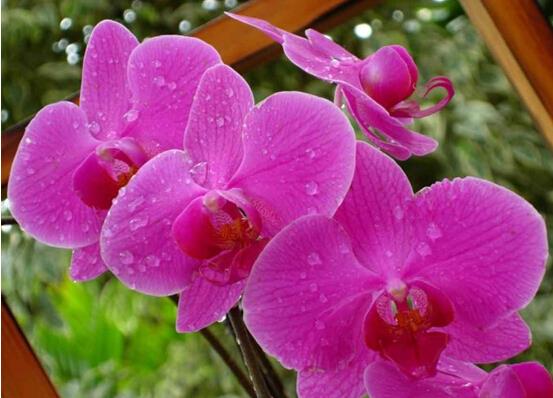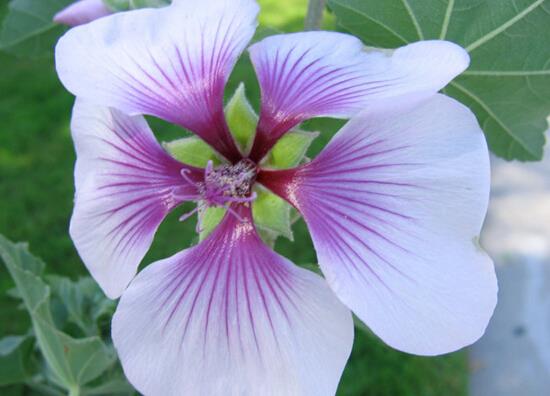There are four ways to teach you to raise Phalaenopsis
Many people have plants in their homes, which can make people feel at ease and beautify the environment. Phalaenopsis is a good choice, Phalaenopsis is not only bright and beautiful, but also gives people a vibrant look. Next we will introduce the culture methods of Phalaenopsis.

Culture method of Phalaenopsis: soil
Materials such as pine needles, peanut shells, bark silk and clay balls can be selected as the substrate for breeding Phalaenopsis. Phalaenopsis has higher requirements for soil, which needs air permeability, decay resistance, micro-acid and water permeability. If you can't configure these materials, you can buy orchid for Phalaenopsis directly at the flower market. (PS: you can choose plastic or ceramic pots for Phalaenopsis planting. Considering that Phalaenopsis likes the breathable growing environment, it is recommended to choose porous shallow pots, the height of which is less than the diameter of the pots.)

Culture method of Phalaenopsis: ambient temperature
The culture temperature of Phalaenopsis cultivated indoors is fastidious. It is best to control the temperature before 25-28 degrees during the day and 18-20 degrees at night. Phalaenopsis grows in the subtropics, so the high temperature and humidity environment is very suitable for the growth of Phalaenopsis (when the summer temperature is higher than 32 degrees, Phalaenopsis will directly enter the semi-dormant state, so it is necessary to prevent high temperature.) When the temperature is low, the growth of Phalaenopsis will be resisted, according to the relevant data, when the temperature is 15 degrees, the growth of Phalaenopsis is directly stagnant. When it is lower than 15 degrees, the root system will stop absorbing water. It will cause black spots on the leaves. The winter weather in the north is relatively cold, and the indoor temperature is lower, but you can turn on the heating. When the indoor temperature is below 15 degrees, you should take special care of Phalaenopsis. During the day, Phalaenopsis should be placed in a sunny place to reduce the number of watering. Or by sprinkling water on the ground. It needs to be kept warm at night and bagged with orchid plants. When using heating equipment to heat orchid plants, we must be careful not to let the radiator get too close to the flowers.

Culture method of Phalaenopsis: watering method
High humidity is a favorite of Phalaenopsis, but stagnant water is by no means. Phalaenopsis should be avoided from being short of water, especially during its growth. Once the frequent occurrence of water shortage will cause the leaves yellowing, and it is difficult to recover. Usually Phalaenopsis can be watered with a spray can. Water can flow down to the bottom of the basin to avoid watering too much water. Because Phalaenopsis likes high humidity, it can often be sprinkled in the place where the orchid is placed to maintain the humidity around the orchid. But you must be careful not to let water accumulate in the heart of the orchid leaf. You can't sprinkle water on the leaves in winter.
Watering principle: see dry and wet, water again when the surface of the cultivation substrate becomes dry; generally, watering should be carried out in a sunny morning, and the water temperature should be close to room temperature. When the indoor air is dry, sprayers can be used to spray directly to the leaves, but be careful not to spray water spray on flowers during flowering.
Phalaenopsis culture method 4: regular ventilation and shade
In the flower-growing forum, we often see the problem of growing flowers in the rotten roots of Phalaenopsis, which may also be caused by the lack of a ventilated environment. Phalaenopsis is delicate, so choosing a ventilated environment will be more conducive to its growth. The muggy environment is not suitable for breeding Phalaenopsis, especially in summer in the south, pay attention to shading Phalaenopsis. Phalaenopsis is an epiphytic orchid with a sexual preference for semi-yin. The temperature is low in winter, so it should be ventilated at noon, but the tuyere should not be blown directly to the orchid plant. In spring and autumn, we should pay attention to protect orchids from light.
Phalaenopsis serves as the standard of home air quality. Phalaenopsis likes high temperature, high humidity, ventilated semi-overcast environment, avoid waterlogging and stuffy, overwintering temperature is not lower than 15 degrees, immediately move into the room to keep the temperature as expected, Phalaenopsis likes the environment with high humidity and ventilation. Ventilation is the key to keeping Phalaenopsis.

Phalaenopsis culture also has so much attention, raise plants, the important thing is thoughtful, plants are very fragile, need to take good care of, if too busy may not be able to review it. Have you learned the culture method of Phalaenopsis above?
Have you learned the culture method of Phalaenopsis above?
Related
- Wuhan Hospital Iron Tree Blooming Result Was Instantly Frightened by the Gardener Master
- Which variety of camellia is the most fragrant and best? Which one do you like best?
- What is the small blue coat, the breeding methods and matters needing attention of the succulent plant
- Dormancy time and maintenance management of succulent plants during dormancy
- Minas succulent how to raise, Minas succulent plant pictures
- What are the varieties of winter succulent plants
- How to raise succulent plants in twelve rolls? let's take a look at some experience of breeding twelve rolls.
- Attention should be paid to water control for succulent plants during dormant period (winter and summer)
- Watering experience of twelve rolls of succulent plants
- Techniques for fertilizing succulent plants. An article will let you know how to fertilize succulent plants.



